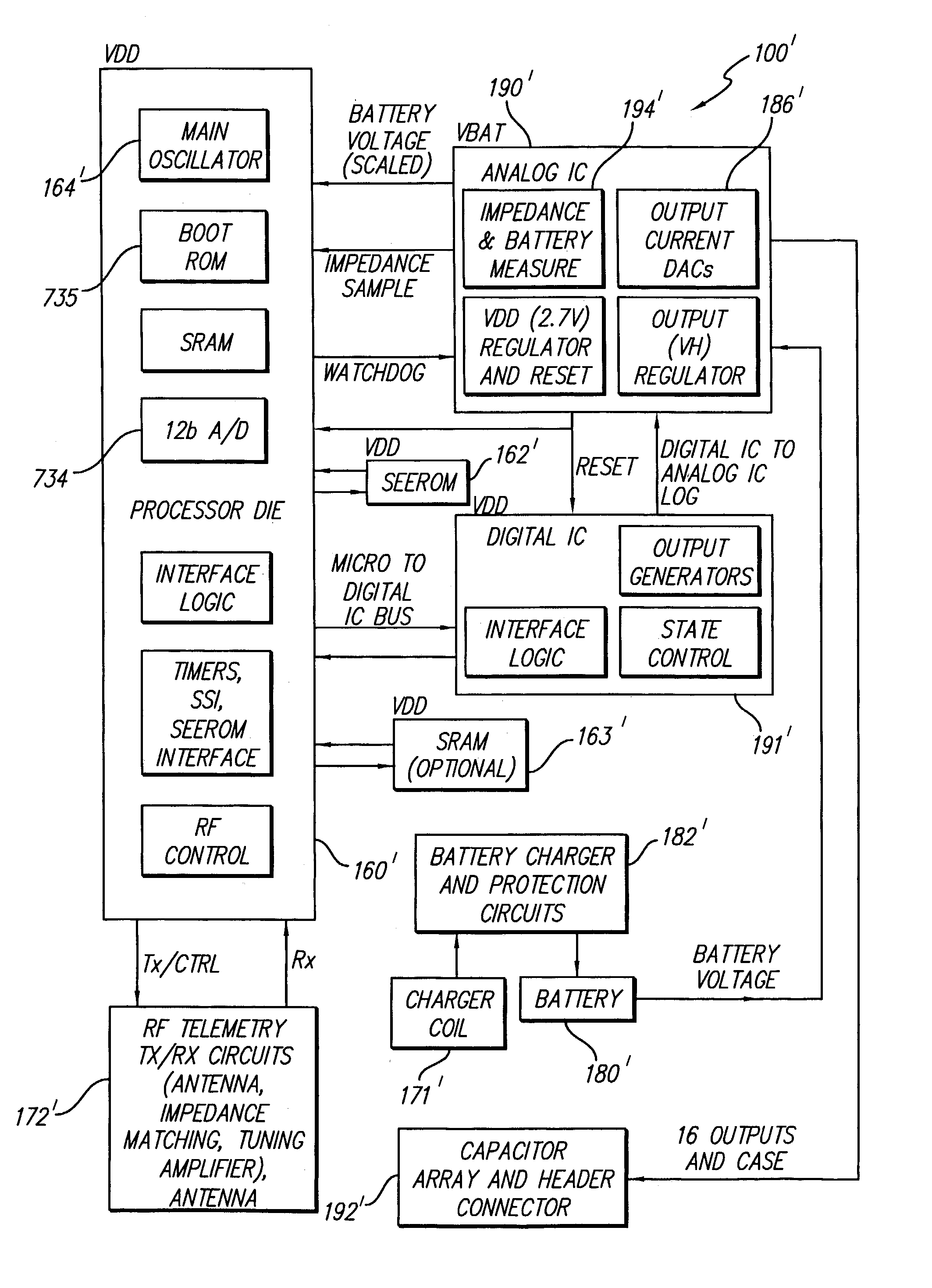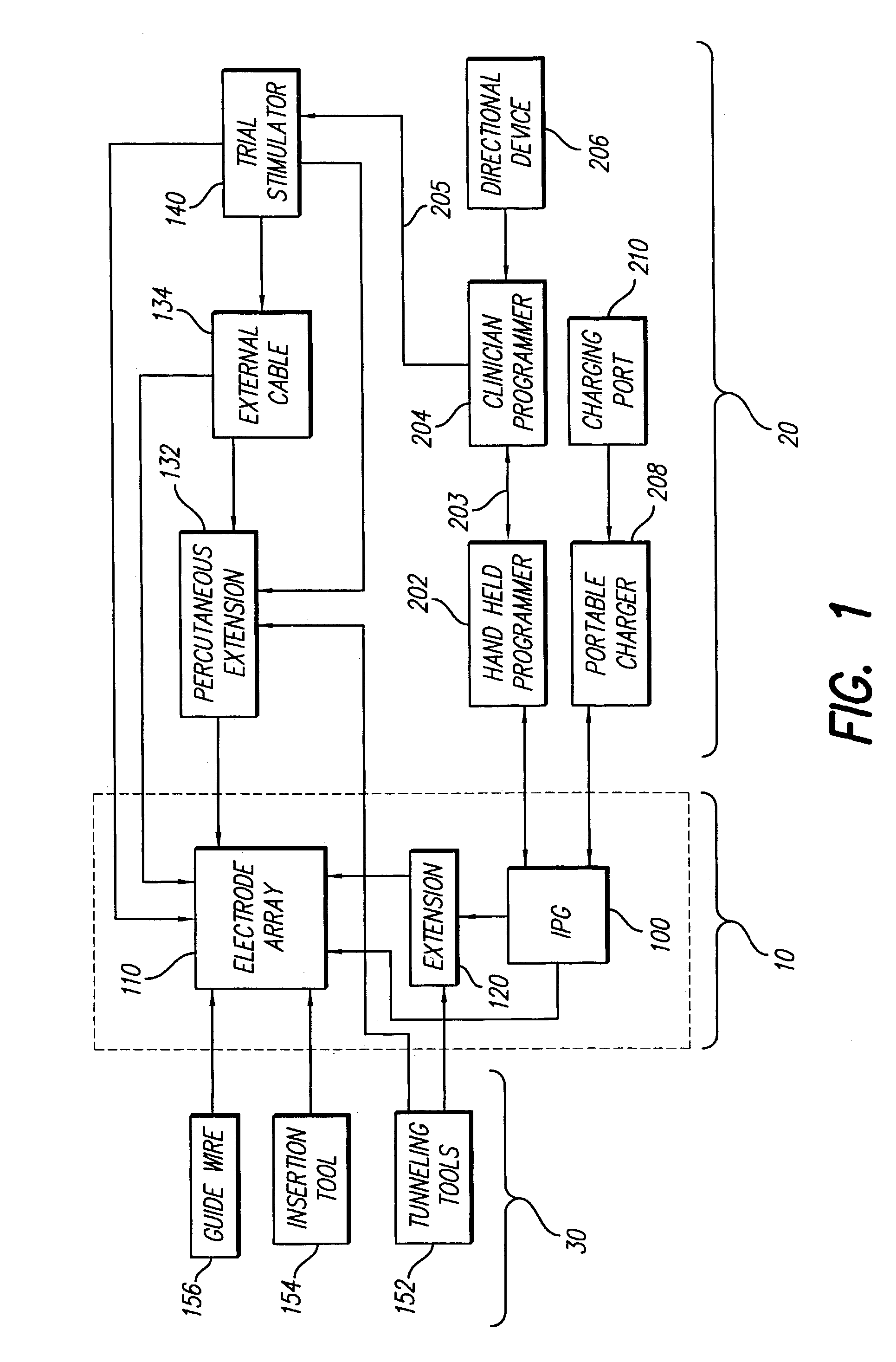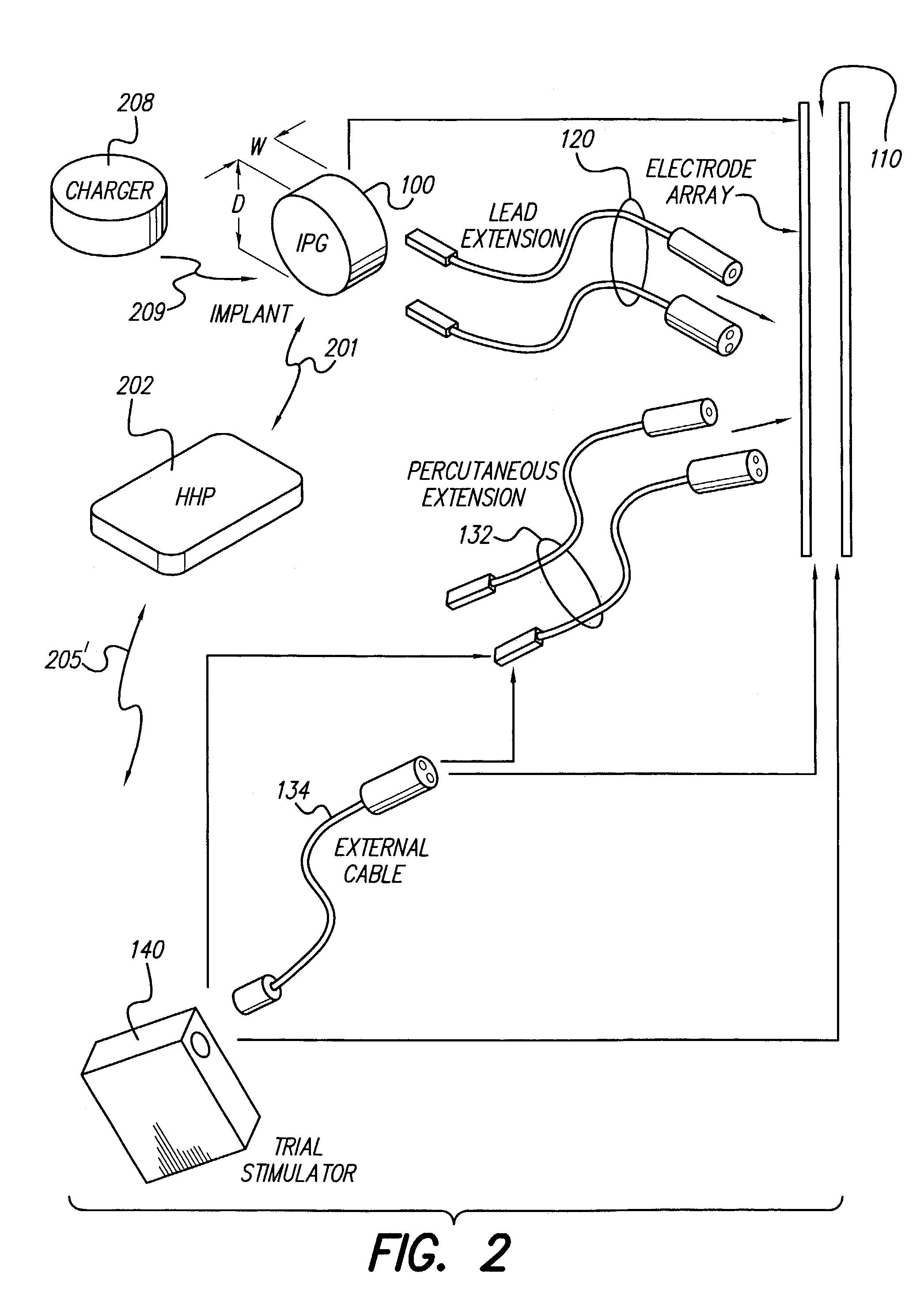Spinal cord and other stimulation systems are known in the art, however, to applicants' knowledge, none teach the use of a rechargeable zero-
volt technology battery within the implanted portion of the system, with accompanying charging and protection circuitry, as proposed herein.
Unfortunately, not all of these features are available in any one device.
For example, one known device has a limited battery life at only modest current outputs, and has only a single
voltage source, and hence only a single stimulation channel (programmable voltage regulated output source), which provides a single fixed pattern to up to four
electrode contacts.
Another known device offers higher currents that can be delivered to the patient, but does not have a battery, and thus requires the patient to wear an external power source and controller.
Yet a third known device provides multiple channels of modest current capability, but does not have an internal power source, and thus also forces the patient to wear an external power source and controller.
However, devices powered by primary (non-rechargeable) batteries have a finite lifetime before the device must be surgically removed and replaced.
Frequent surgical replacement is not an acceptable alternative for many patients.
Powering these devices with conventional primary batteries would require considerably larger capacity batteries to operate them for a reasonable length of time, resulting in devices so large that they may be difficult to
implant or, at the very least, reduce
patient comfort.
However, given the state of the art in battery technology, the required
energy density is not achievable at the present time.
However, these systems obviously require the patient to continually wear an external device to power the implanted pulse generator, which may be unacceptable for many patients because they are often bulky and uncomfortable to wear, and naturally, limit patient mobility.
However, these devices were met with limited success in regards to battery performance and
market acceptance.
NiCd batteries also suffered from a phenomenon called “
memory effect,” which causes the
cell to lose capacity if cycled at shallow
discharge depths.
Moreover, NiCd batteries have a high self-
discharge rate, losing approximately 30% of their capacity per month at body temperatures.
Also, cycle life performance was poor, as NiCd batteries typically lasted fewer than 300 cycles.
In addition, charging NiCd batteries was often problematic because the
standard charge termination method for NiCd batteries is somewhat complicated, requiring the need to detect a zero or
negative voltage slope (dV / dt) and / or temperature slope (dT / dt).
Furthermore, there may be disposal issues with NiCd batteries, as
cadmium is highly toxic to the environment.
However, NiMH batteries suffer from some of the same drawbacks as well, including low
cell voltage (1.2 V), high self-
discharge (>30% per month), difficult charge termination, low cycle life (<300 cycles), and to a lesser extent,
memory effect.
However,
lithium metal in its pure form is extremely reactive, and proved to be very unstable as a
battery electrode as employed in early designs.
However,
Lithium-
ion batteries are not as tolerant to overcharging and overdischarging.
If
Lithium-
ion batteries are over-discharged (<1 V), the negative
electrode may dissolve and cause plating of the electrodes.
This can lead to internal shorts within the cell, as well as possible
thermal runaway.
However, such disclosed use requires careful avoidance of
overcharge and overdischarging conditions, as outlined above, else the
implant battery, and hence the
implant device, is rendered useless.
Unfortunately, commercial realization of
Lithium-ion
polymer batteries has been slow and fraught with early production problems.
 Login to View More
Login to View More  Login to View More
Login to View More 


